Hydroponics
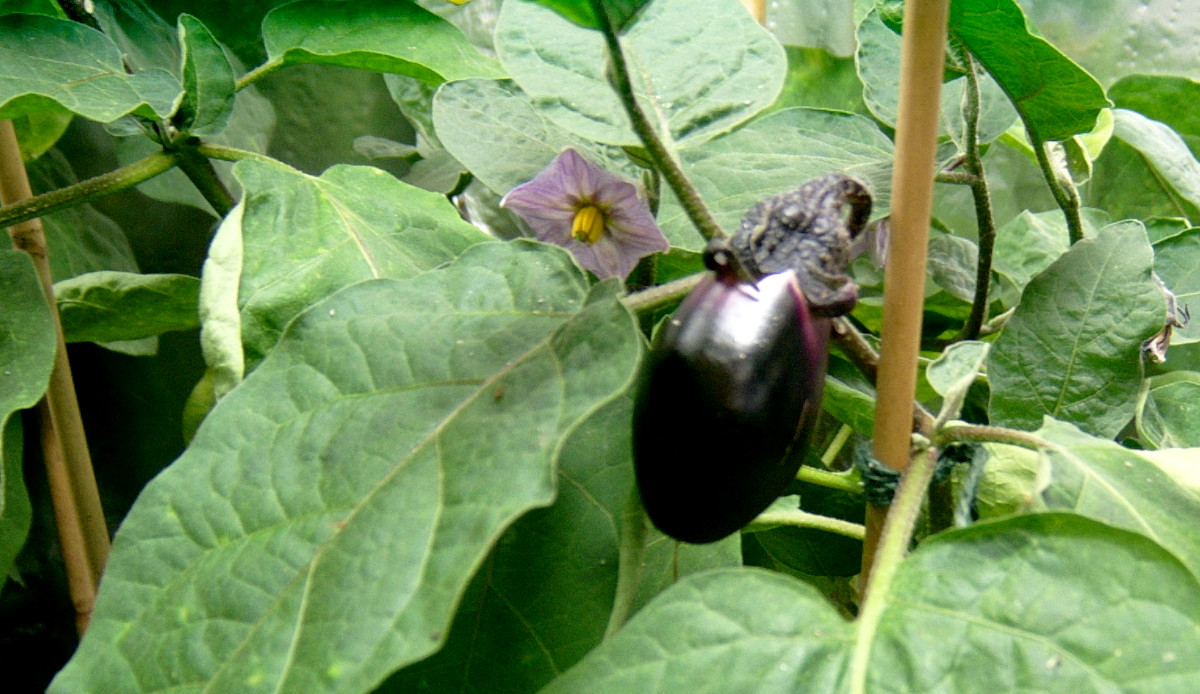
People's interest in how their food is produced has grown dramatically during the last years. More customers demand "safe" food that is grown in a healthy, careful manner and is free of chemical contaminants.
Table of Contents
As a result, more people are opting to produce their own food, and many are investigating hydroponics as a method of doing so.
If you are considering trying hydroponic gardening, there are a few things you need to keep in mind. First, you need to decide what type of hydroponic system you want to use.
Below: I use hydroponics and grow lights to get a head start with tomatoes and peppers.
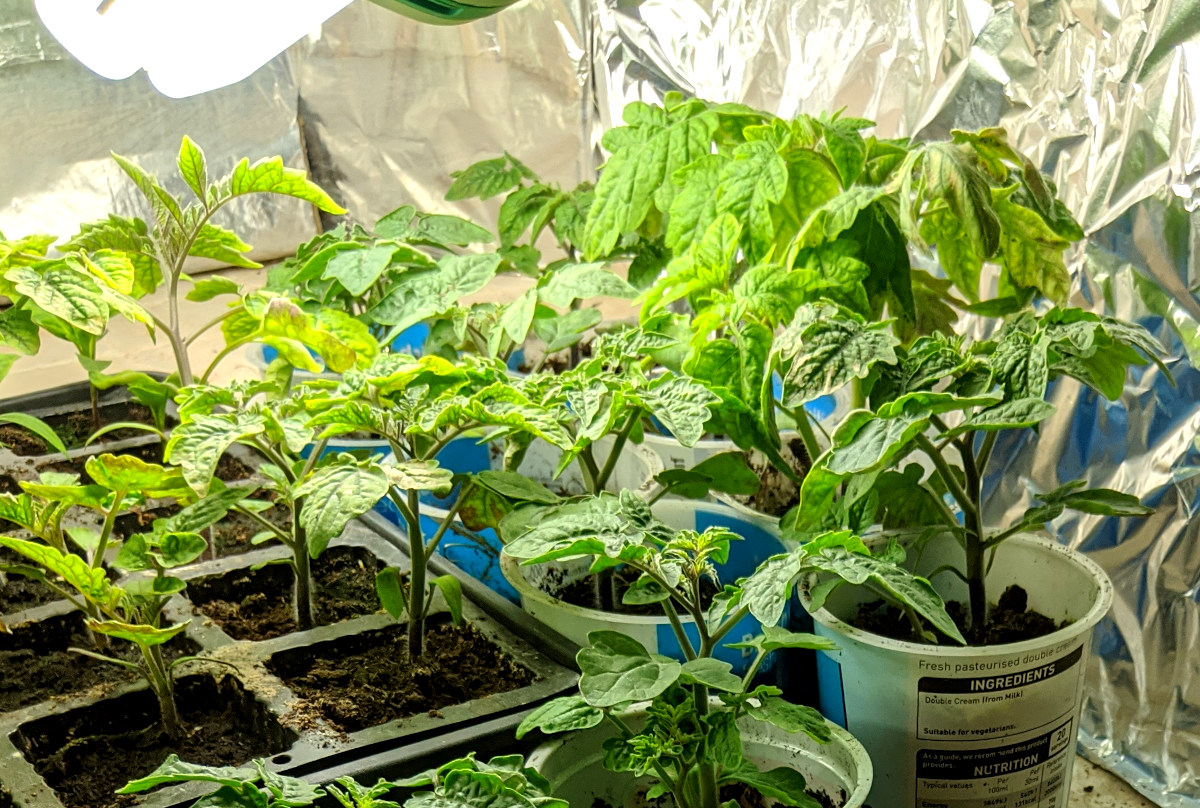
There are many different types of systems available, so you should choose one that is right for your needs. Second, you need to choose a location for your hydroponic system. The location should be sunny and have access to water. Third, you need to purchase the necessary supplies, such as a nutrient solution, growing media, and a grow light.
Once you have set up your hydroponic system, you need to learn how to care for it properly. This includes watering the plants regularly, adjusting the nutrient levels, and controlling the temperature and light levels. With a little care and attention, you can enjoy fresh, healthy produce from your own hydroponic garden all year long.
What is hydroponic gardening?
Hydroponics is a method of growing plants inside that does not require the use of soil. Plants acquire all of their nourishment from a nutrient solution given to their roots rather than extracting basic components required for development from the earth.
This method promotes fast growth, higher yields, and better quality. When a plant is growing in soil, its roots are constantly looking for the nourishment it requires to survive.
Below: Lettuce being grown indoors hydroponically in the depths of winter.
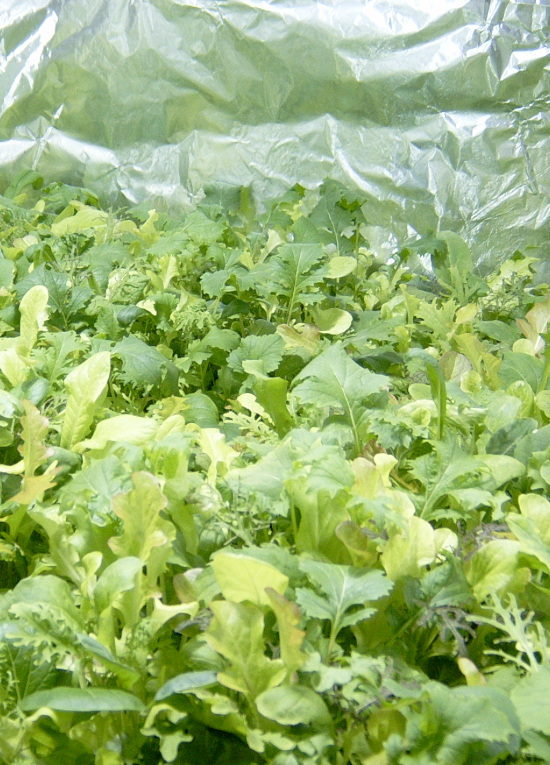
When a plant's root system is immediately exposed to water and nourishment, the plant does not have to use any energy to sustain itself. The energy used by the roots in collecting food and water can be diverted towards the plant's development. As a result, leaf growth, as well as fruit and flower blossoming, improves.
Here are some of the benefits of hydroponic gardening:
- Fresher, healthier food: Hydroponically grown plants are often fresher and healthier than soil-grown plants, because they are not exposed to soil-borne pests and diseases.
- More control over the growing environment: Hydroponic systems allow you to control the exact nutrient levels, light levels, and temperature, which can lead to healthier, more productive plants.
- Less space required: Hydroponic systems can be used to grow plants in a small space, such as a balcony or patio.
- Lower cost: Hydroponic systems can be less expensive to set up and maintain than traditional soil-based gardens.
Hydroponics may be used to produce anything from a tiny collection of herbs in a kitchen to hundreds of plants in a massively commercial enterprise.
Hydroponic gardening is very beneficial for people who have limited or no outside area, such as city folk, young professionals, or renters who cannot have an outdoor garden.
Many different sorts of plants thrive in hydroponic environments. Herbs, lettuce and greens, tomatoes, peppers, and strawberries are among the best plants to grow in a hydroponics system.
Is hydroponics good or bad for the environment?
Hydroponic systems function by enabling precise control over various variables such as temperature and pH balance, as well as increased exposure to nutrient uptake.
Hydroponics works on a simple premise: give plants precisely what they want or need, whenever they need it.
Below: You can grow most plants in hydroponic systems. Here is a yellow courgette plant from a flood and drain setup.
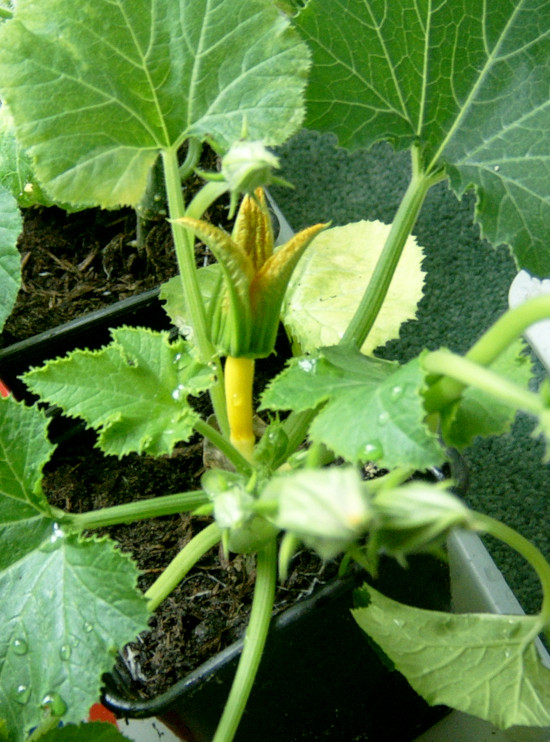
Hydroponics uses fertiliser solutions that are specifically suited to the demands of the plant being cultivated.
Growing operations let you precisely control how much sunlight and nutrients the plants get and how often. The pH level may be measured and changed. Plant development increases in a highly tailored and regulated environment.
Many danger factors are reduced by managing the plant's surroundings. Plants grown in gardens and fields are subjected to a variety of factors that have a detrimental influence on their health and growth.
The uncertainty of growing plants outside and in the soil is eliminated by hydroponic systems. Seedlings develop quicker when the physical barrier of the soil is removed. Hydroponics produces considerably healthier and higher-quality fruits and vegetables by removing pesticides. Plants thrive in the absence of restrictions.
Is hydroponics better than soil?
A hydroponic system eliminates the need for nutrient-rich soil by delivering fertilisers straight to your plants. Traditional soil is an excellent source of nutrients, but it's also a good source of pests, soil-borne disease, and potentially deadly temperature fluctuations.
Hydroponics is a method of growing plants without soil. Instead, plants are grown in a nutrient-rich water solution. This method has many advantages over traditional soil-based gardening, including:
- Increased yields: Hydroponic plants can grow up to 30% faster and produce up to 50% more yield than soil-grown plants.
- Reduced water usage: Hydroponic systems use up to 90% less water than traditional soil-based gardens.
- Better control over nutrients: Hydroponic systems allow you to control the exact nutrient levels in the water solution, which can lead to healthier, more productive plants.
- Less pests and diseases: Hydroponic systems are less susceptible to pests and diseases than soil-based gardens.
The two growing methods can just as easily be used in combination to start seedlings early or grow crops you would not normally be able to.
Below: Seedlings getting and early start in a simple flood and drain setup.
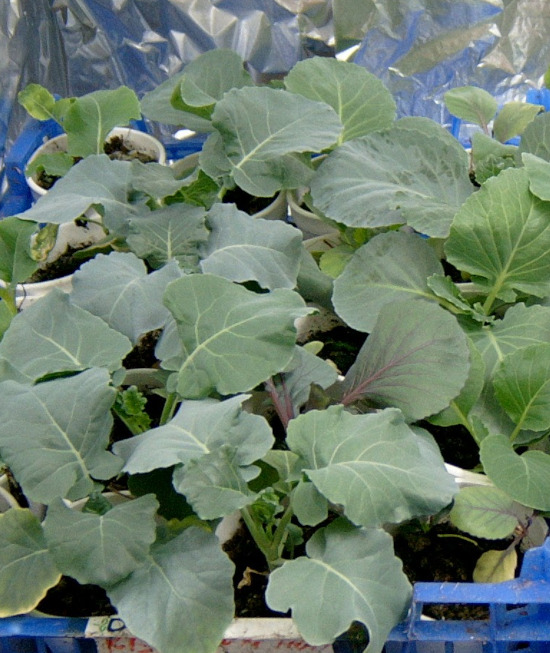
Hydroponics is considered "better" in general since it uses less water. You can grow more in less space with hydroponic systems since they are layered vertically. Because you can control the nutrients you feed your plants with hydroponics, they grow faster than they would in soil.
What are the pros and cons of hydroponic growing?
Although the benefits of hydroponics have been called into doubt at times, there appear to be a number of advantages to growing without soil.
Below: One of the big pluses for me is I can grow Aubergine or eggplant in the UK, something which we can't normally do.
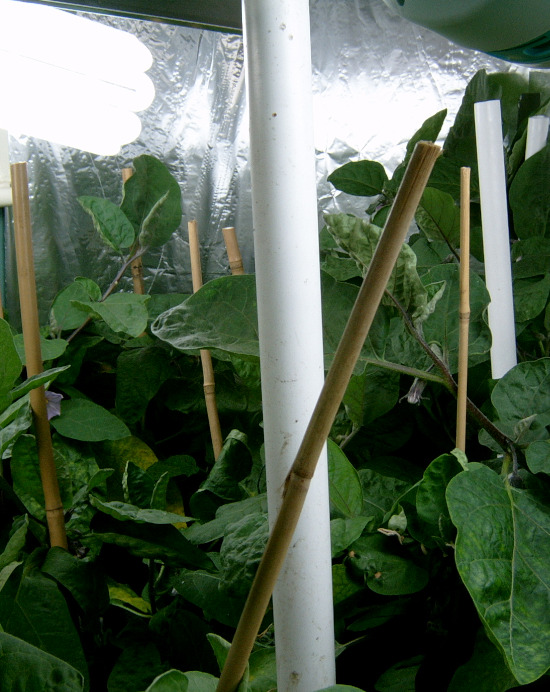
Some hydroponic gardeners have discovered that abandoning standard practices, results produce much better yields. This seemingly small alteration in how we manufacture food is groundbreaking –– it allows producers to produce food anywhere in the globe, at any time of year, and with smaller budgets and limited resources.
Here are some benefits of hydroponics:
- Plants are grown without soil: One of the primary reasons that many modern farmers have chosen hydroponic farming is because it allows them to use fewer chemicals than traditional types of agriculture. Weeds should not be an issue in hydroponic systems because they are strictly managed.
Cultivation of food without soil was once unthinkable, but it is now a reality for both household and commercial farming. There are several advantages to growing plants without soil. Soil quality varies greatly from one place to the next, and many plants have strong preferences for a certain soil type. - Seedlings can be started early to maximise outdoor crops: I often start a selection of seedlings off hydroponically to give the a head start on the season.
- You can grow plants you might not normally cultivate because of local conditions: My example is being able to harvest eggplant all year in the UK where it normally never fruits properly, even in a greenhouse.
- Controlled Environment: Climate may be completely controlled in hydroponic systems. Temperature, light intensity and duration, and even air composition may all be adjusted to meet the needs of optimal development. This opens up the possibility of growing vegetables regardless of season, allowing farmers to optimise production all year long and customers to obtain items whenever they choose.
- Higher Yields: Plants cultivated in well-managed hydroponic systems are thriving. Plants spend more time growing upward and less time and energy building large root systems to hunt for nourishment since their roots are soaked in all the nutrients they require.
- Save Space: One of the most obvious benefits of utilising hydroponic gardening as your primary farming method is that you will be able to save space. When plants are grown in soil, their roots stretch out to get the water and nutrients, they need to survive. Hydroponic systems do not require nearly as much space since the water in which the plants are grown is already nutrient-rich, which means that the plant's roots do not need to extend out to get these nutrients.
- Saves Water: When employing hydroponic gardening, you will also be able to conserve a significant amount of water because hydroponic systems can efficiently cycle water for decreased consumption. Farmers usually use excessive amounts of water in conventional farming because a substantial portion of the water is wasted before it reaches its intended destination. It is critical to note that the agricultural business consumes up to 80% of all water consumed in the United States. Anything you can do to reduce your usage will improve the planet.
What are the types of hydroponics?
There are several types of hydroponic growing systems.
- Wick System: One of the easiest and simplest hydroponic systems is the first on the list. This system does not require water or air pumps to function. A wick transports water and nutrients from a reservoir to the roots of a plant in this setup. The plants are hung in a growth medium and supported by a reservoir of nutrient-rich fluid. One end of the wick is immersed in the growth medium, while the other is immersed in the nutrients. Wick systems are ideal for tiny, home-grown plants and are an excellent alternative for a home-based hydroponic garden. However, it is important that the growth material utilised is capable of transporting nutrients and water efficiently. Coconut coir, vermiculite, and perlite are other viable alternatives.
- Deep Water Culture System: Plants are kept in place by a floating platform above a fertiliser and water container. Plant roots are suspended and extended into the oxygenated, nutrient-rich fluid. The disadvantage of this technique is that it does not function well with huge, slow-growing plants. Other than lettuce, very few plants survive in this arrangement.
- Nutrient Film Technique Hydroponics Systems: Nutrient film method devices continuously supply nutrient solutions to plants along gently sloping growth channels. Plants are grown in individual net pots with a suitable growth material. The roots develop within the growth channel, which is always in touch with the nutritional solution. Once the solution has flowed from one end of the growth channel to the other, it drains into a reservoir before being recirculated back into the system for reuse by the plants. Nutrient film hydroponics is appropriate for both home and commercial hydroponics.
- Ebb and Flow System: This technique is also known as a flood and drain system. Plants will be grown in an ebb and flow method within a growth bed with a growing media. After you've planted your goods, the system will fill the growth tray or plant tray with nutrient-rich fluid.
- Drip System: Drip is a hydroponics system that is simple to maintain and tailor to your specific requirements. You will be using a drip system with complete control over how much solution each plant receives with this setup. You may then easily regulate the flow of the solution based on the plants you have and how frequently they should be fed.
- Aeroponics Systems: Aeroponics, the most sophisticated of the hydroponic systems, is the ultimate form of hydroponics. Your plants will be hung in the air using aeroponics, generally kept in place by unique clips. A nutrient-rich solution will spray the roots of your plants at regular intervals using specialist misters. Because the plants are hung in the air, they receive both food and oxygen to thrive.
What is the easiest hydroponic system to use?
The simplest form of hydroponic system to install and maintain at home is Deep Water Culture (DWC). The plants in this arrangement develop with their roots immediately immersed in nutrient-rich water.
Below: Deep water culture is the easiest method of hydroponics to get started with.
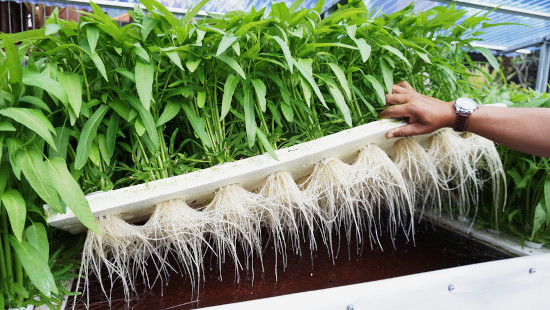
This may be accomplished by growing in big containers or buckets for home gardeners. The systems are closed, and the water that is not consumed by the plants is recycled.
Farmers can manage conditions and lighting schedules to increase plant output by growing inside. Planting density may be increased by designing systems that take advantage of vertical space.
